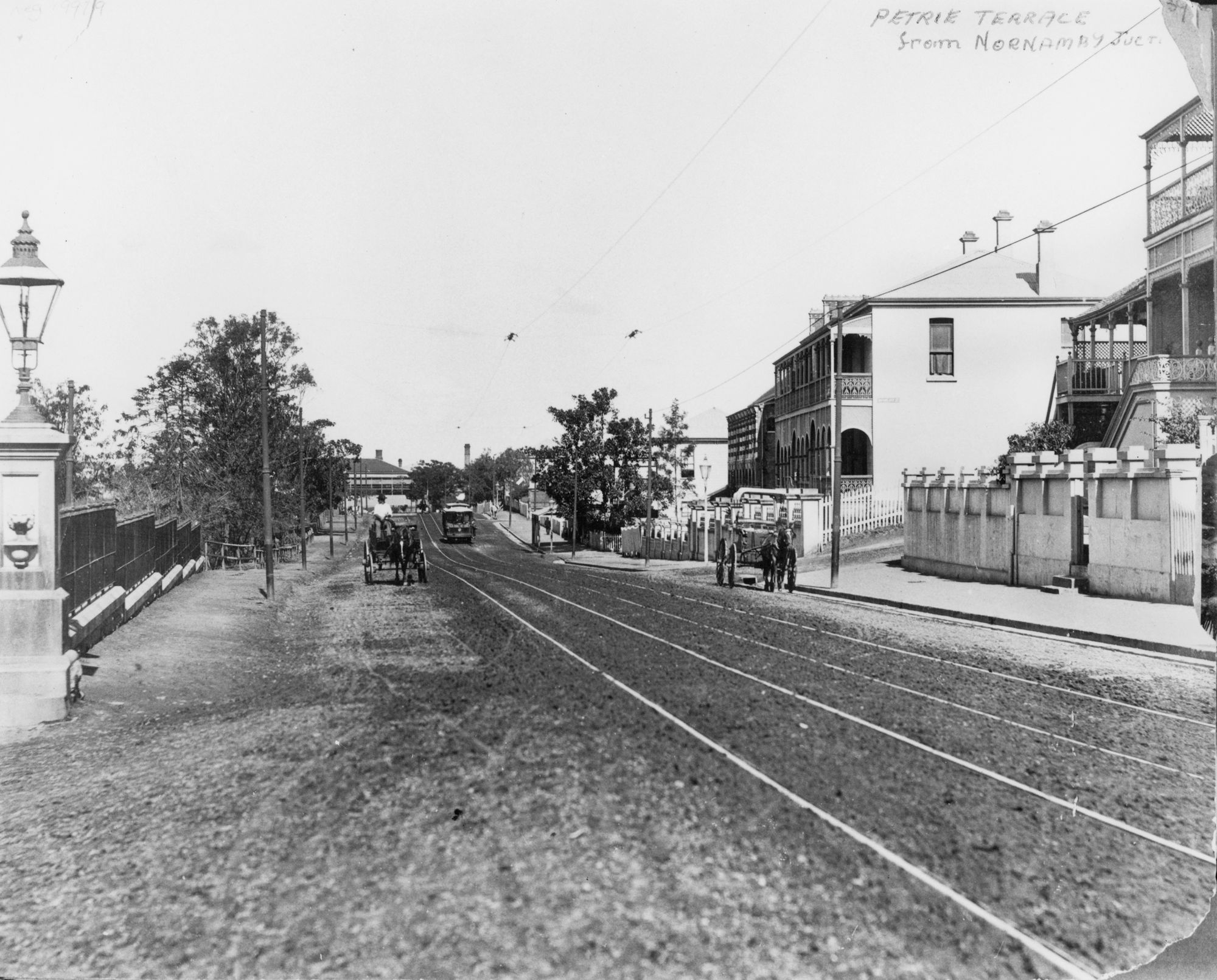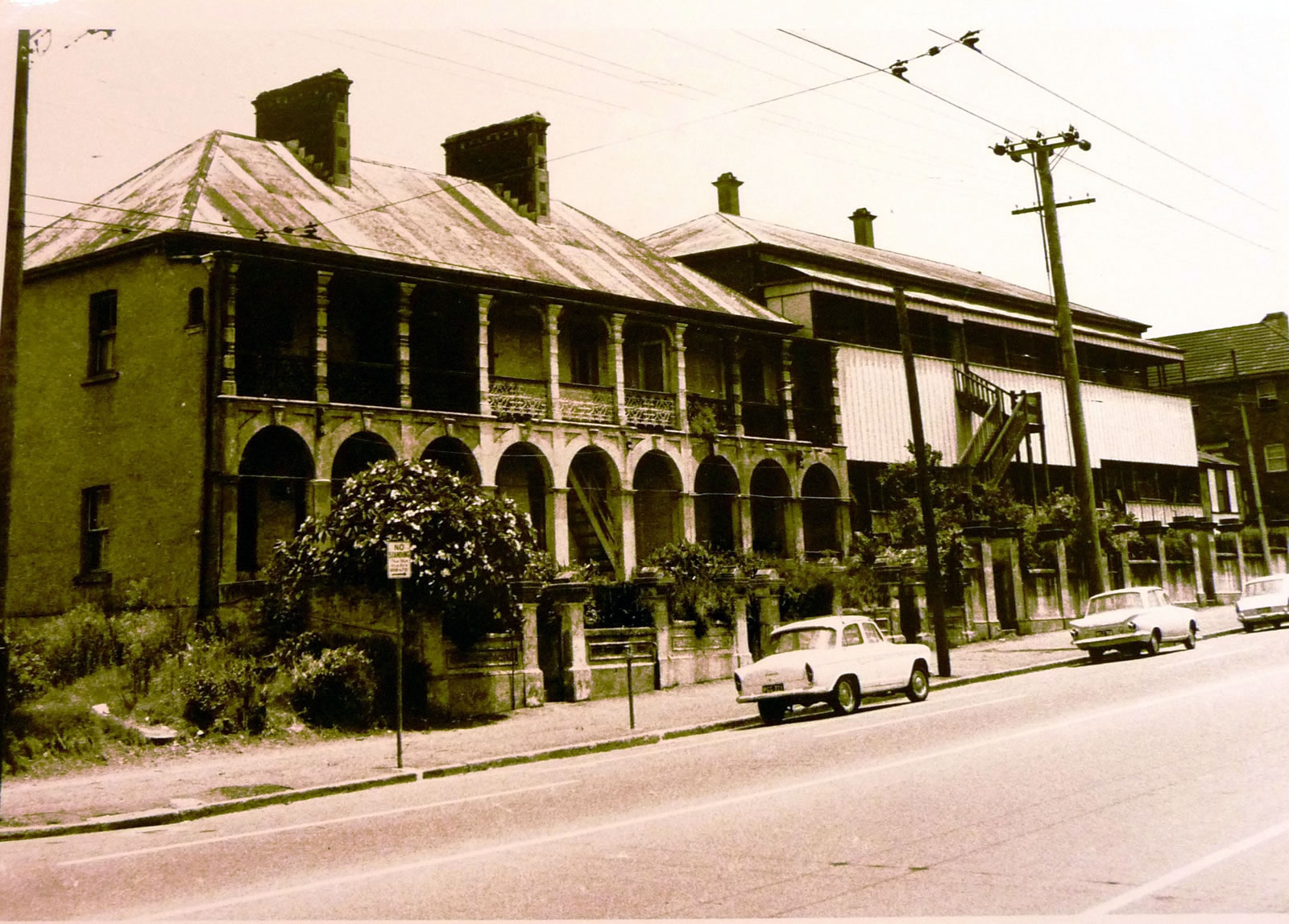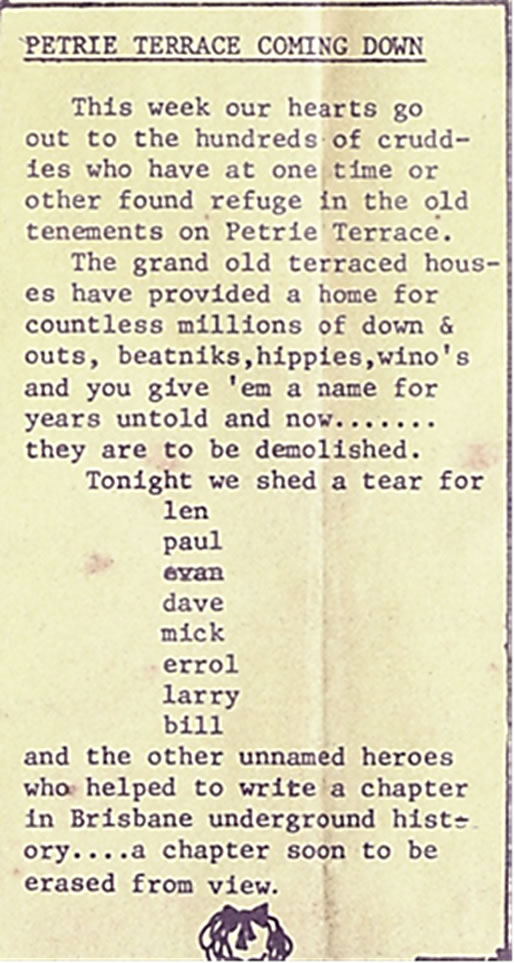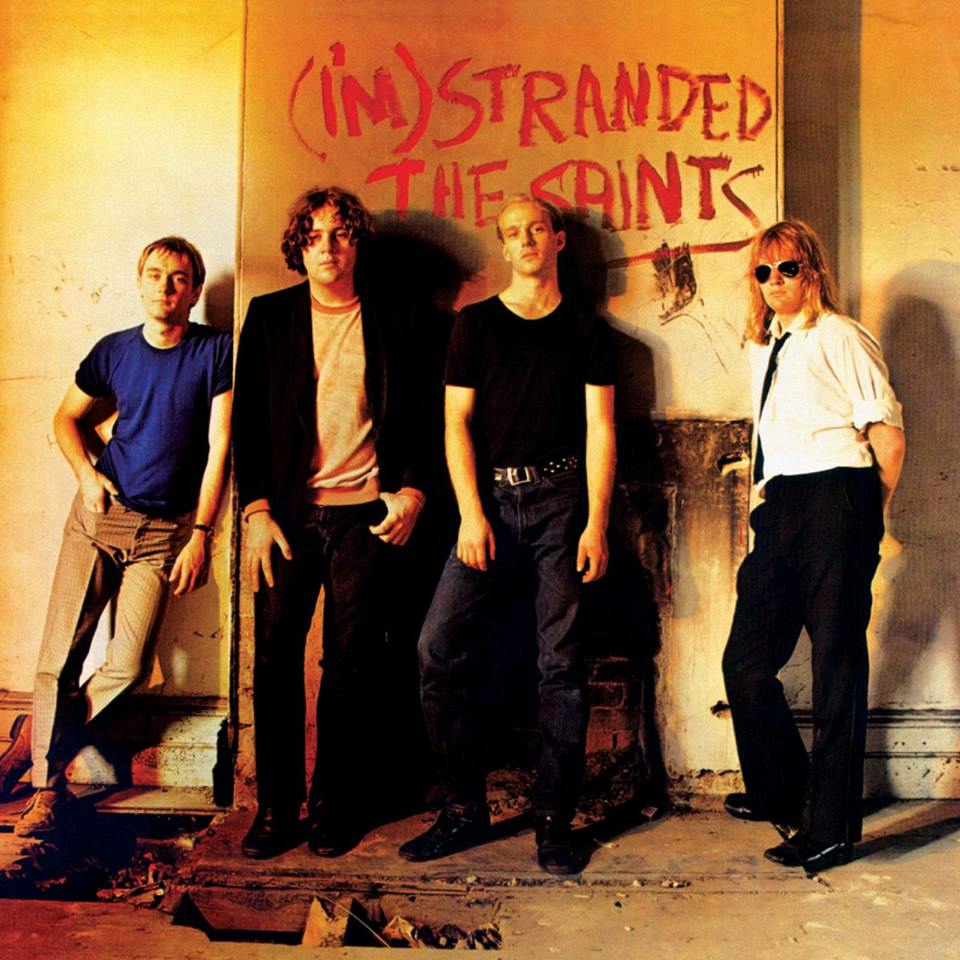Illawarra and O'Keeffe's buildings - Heritage and music digital trail
The northern end of Petrie Terrace, towards the Normanby Fiveways, was originally known as Bishop’s Hill, after Catholic bishop James O’Quinn. As Brisbane’s population expanded from the mid-1800s, affluent members of colonial society increasingly acquired and built residences on elevated land, including properties on the ridge of Petrie Terrace. While mostly populated with tin and timber housing, a distinctive feature of Petrie Terrace was the concentration of terrace housing, a building form that was not widely used in Queensland compared to southern states.

The row of three terrace houses on the corner of Wellington Street and Petrie Terrace date from 1881 and were owned and built for Ellen and James O’Keeffe. Italian-born architect Andrea Stombuco designed the residences, one of which was occupied by the O’Keeffes. Over time, this fashionable rental address was home to a range of tenants, from female music teachers to clothiers and bootmakers. Next door, the more imposing Illawarra Buildings, also designed by Stombuco, were built between 1887–88 for Mrs Sarah Guilfoyle, a widow. One of the early occupants was barrister Thomas J Byrne, who became Premier of Queensland.
Together, these three terraces were among the finest inner city residences of their era.
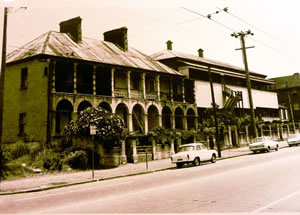
By the interwar era the buildings continued to be occupied, although the decline in their condition meant they were used as cheaper lodgings. Most terrace houses in Brisbane shared a similar fate during this time.
During the late 1950s to mid-1960s, leading local artists including Jon Molvig, Andrew Sibley, John and Jenny Aland and Merv Moriarty took advantage of the cheap accommodation, living, painting and holding classes in the O’Keeffe buildings. One class former student recalled: ‘a few shillings and a bottle of wine would get you training in being a dissolute artist’.

By 1969, the future of the unsightly Illawarra buildings (also known as the Petrie Mansions) looked precarious. The last edition of the newspaper by radical group the FOCO Club mourned the pending loss ‘of the old tenements on Petrie terrace…a chapter in Brisbane underground history…soon to be erased from view’.
By the mid-1970s both terraces were empty, ‘disfigured, dilapidated and derelict doss houses’. While the Saints were in residency at Club 76, Ed Kuepper painted ‘I’m Stranded’ over a crumbling fireplace in Illawarra.
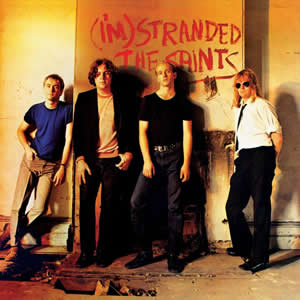
Film director Russell Mulcahy used the vacant building to shoot a film clip of the band performing (I’m) Stranded. The image of The Saints in front of the fireplace adorns the cover of their 1977 debut album, which remains one of Australia’s most iconic rock images.
The room featuring the fireplace soon becomes a favourite spot for local musicians and fans to visit have their photo taken. By the end of the 1977 the buildings were converted into the Petrie Mansions and Terrace restaurants.
The buildings have since returned to their original use—terrace housing. Perhaps above a reconstructed fireplace, (I’m) Stranded lies under layers of paint, waiting to be revealed.
